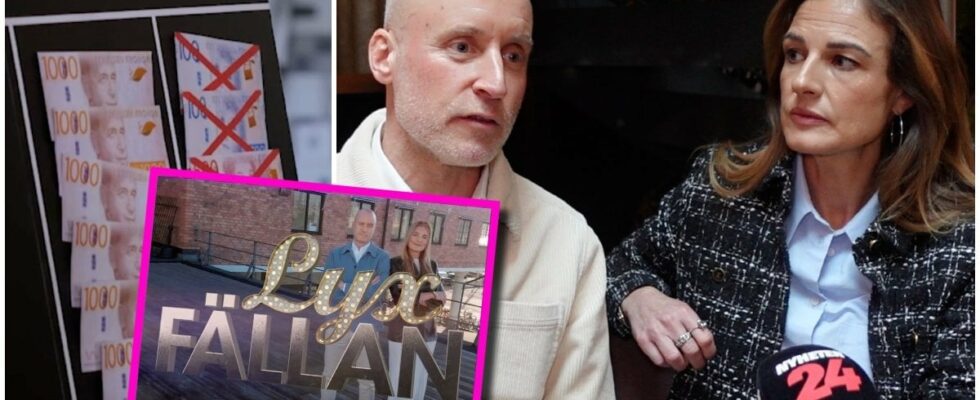TV3’s long -distance Luxury trap is based on the fact that people and families with financial difficulties are helped by the program’s experts to overcome their problems. The very first program was broadcast in 2006, and right now the 36th season is rolling in the TV box.
So is the new luxury trap: “looks different”
At present, there are economists Magnus Hedberg and Magdalena Kowalczyk who shoulder the role of program experts. In an interview with News24 they tell about the differences in the current season of the luxury trap compared to before, and how the program has changed.
Read more: Emma in the luxury trap burns 33,700 every month: “Bleerants Money”
Magnus Hedberg in the new season. Photo: TV3/Luxury trap
– It may not be a huge difference from one season to another, but if you look five seasons back then much has happened. It is a slightly different type of loan market. It is also different what the people strive for, some other ideals. And that is constantly adjusted. Somewhere the luxury trap hangs with the development of society. You see that bit by bit. Season for season is updated, says Magnus Hedberg.
Don’t miss: Frida played for 400,000 in just one month: “Something in Horse Road”
Magdalena Kowalczyk explains that it is precisely the budget boards that differ most compared to the previous seasons of the luxury trap.
– In general, you can say that the budget boards look different as well. Nowadays we more often meet people of many different ages and backgrounds who have totally okay income. It is not low -income earners only. They often have reasonable expenses and basic costs for food and clothing, but have acquired amenities. You have treated yourself and blown on, and it has felt like you can afford everything in this buy-now-pay-sen community. And so you have an incredible amount of other costs without even being aware of it, says Kowalczyk and continues:
– You have funded it by borrowing, by blowing on, and having spent more than you had. And it grows so terribly fast. So it is the debt column that is generally breathtaking.
Magdalena Kowalczyk in the previous season of the luxury trap. Photo: TV3/Luxury trap
Magnus Hedberg explains that the “snowball” is building much faster in the newer seasons, and that they now see very back -heavy budget boards.
– There are more extreme figures because things go so terribly fast in this interest rate situation, Magdalena Kowalczyk agrees.
Read more: Has debts of 700,000-refuses to terminate their Spotify account
Positive change in the luxury trap: “People are faster to ask for help”
But despite heavy debt columns, Magdalena Kowalczyk also wants to highlight a positive change that she has noted.
– I think people are a little faster to ask for help. A couple of years ago I could feel: “If you had asked 4-5 years ago then we would have had a chance to turn this around”. Now it has usually not gone as far, although the problems are still serious.
Don’t miss: Haven’t paid the rent in two years – playing the money away
Magnus Hedberg and Magdalena Kowalczyk. Photo: News24
Magnus Hedberg also agrees that it is not as stigmatized to have financial problems as before.
– It is not as much taboo to have problems with the money now, because there are more people who have it. Before, it was like this: If you have taken too much in loans and not been able to pay your bills, then you are a loser and a zero that has no control over the stuff. But now there are a lot of ordinary people who have good income and who normally have control over the stuff.
– Suddenly they have got it tough financially, or something unexpected happens. I think people have become a little more humble now, both after the pandemic, but also with the inflation crisis. And it has meant that it is not quite as embarrassing anymore to have problems with the money.
